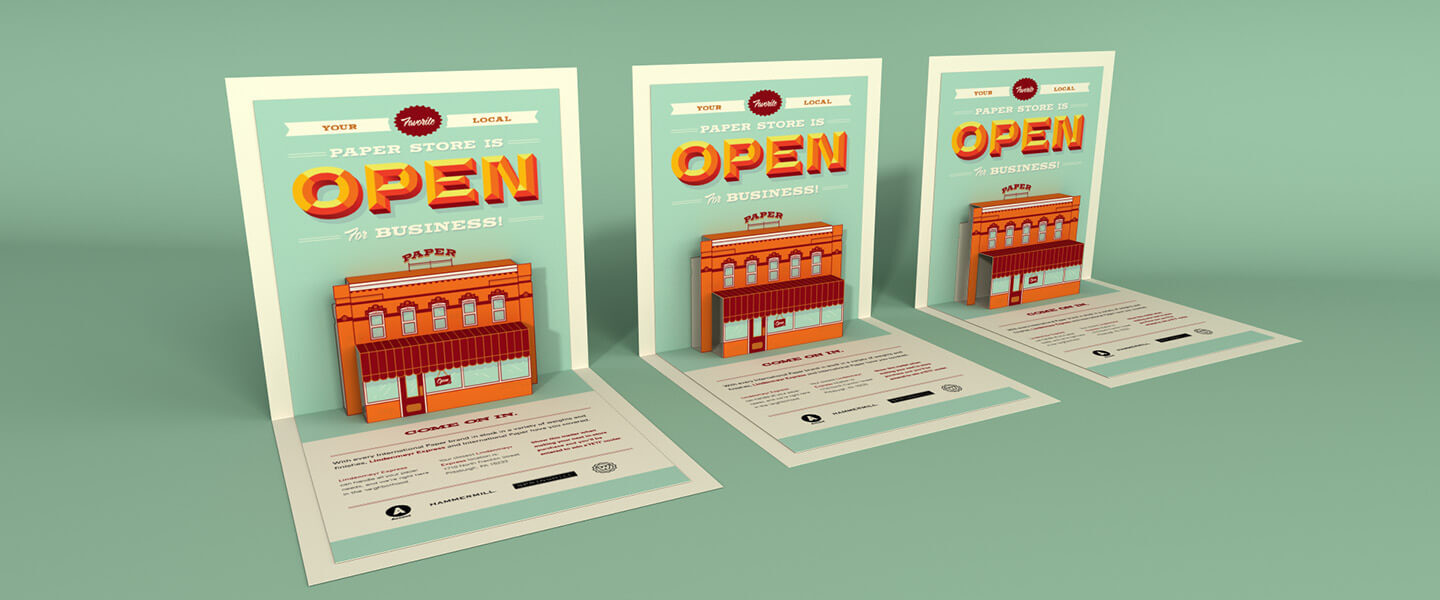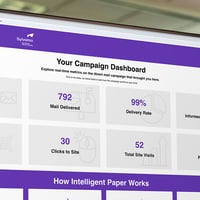What is 3D Mail?
 The reason marketers continue to leverage direct mail in today’s digital-driven age is pretty simple — it works. In fact, a recent study found that almost 90% of direct mail gets opened compared to just 20% of emails, and that more than 60% of consumers said receiving direct mail prompted them to action. What’s more, consumers trust print communications like direct mail more than any digital channel.
The reason marketers continue to leverage direct mail in today’s digital-driven age is pretty simple — it works. In fact, a recent study found that almost 90% of direct mail gets opened compared to just 20% of emails, and that more than 60% of consumers said receiving direct mail prompted them to action. What’s more, consumers trust print communications like direct mail more than any digital channel.
Add this up and you have a wide open lane of dialog with an audience that is receptive to this form of communication and engagement. However, the challenge is leveraging the power of print to design a direct mailer that creates an immersive experience that differentiates it from others in the mailbox.
3D mail — or direct mail that utilizes dimension, shape or form — can be the solution. Here, we’ll take a closer look at 3D mail to better understand how it works, why it can be valuable and how you can design and print high-quality 3D mail to drive response rates and increase the ROI of print communications.
How does 3D mail work?
3D mail, also known as dimensional mail, is mailed flat like more traditional direct mail pieces such as a standard letter or self-mailer, but, upon opening, 3D mail pops up to create a more dynamic, three-dimensional experience. The interactive nature of 3D mail makes it a powerful tool for lead nurturing campaigns or for positioning high-value offers to a very specific audience that has already demonstrated interest in who you are or what you do.
It’s important to note that 3D mail is more complicated to design and print than more traditional direct mail such as postcards or flyers, and it can be more expensive to print. However, the benefits 3D mail provides can be well worth the cost and effort, and here are some examples of successful 3D mail that we absolutely love.
What are the benefits of 3D mail?
3D mail has a number of unique benefits compared to direct mail print like postcards. First, the 3D form opens up more unique, innovative ways to incorporate copy and visuals — for example, you can place copy, images or other design elements on pop-up or expandable panels to maximize your use of space and pique the interest of your audience.
Another benefit of 3D mail is that it helps you communicate ideas in a way that surprises your audience, or at the very least helps your audience interact with a product or service from a different perspective. Plus, the tactile nature of 3D mail — and direct mail print in general — can ignite your audience’s curiosity and interest in a way that promotes better retention and recall of important information or messaging.
Choosing heavier paper stocks or unique substrates, specialty inks and finishes, embossing, cut outs or other innovative design elements can help increase the tactile value of your 3D mail. It also increases the likelihood your target audience will more thoroughly interact with the content of your mailer or convert on an offer.
As a result, 3D mail has the potential to drive higher response rates compared with more traditional direct mail print, and the more immersive nature of 3D mail makes it more likely that your audience will share the piece with others, further optimizing your print communications spend.
In fact, a recent survey found that 51% of people already share direct mailers with their friends or family, and a three-dimensional approach to direct mail can only help to increase the size of your audience.
What are the best applications for 3D mail?
As we mentioned before, 3D mail is more complex to design and print, which makes it more cost-effective for certain applications. Event marketing campaigns lend themselves to postcards or even self-mailers because of their relative ease of design and cost-effectiveness to print and send.
One such application where 3D mail can shine is account-based marketing (ABM) campaigns. ABM campaigns are designed to provide high-value offers to extremely targeted contacts that have already expressed interest in your product or service.
The more special or unique the mailer is, the more likely it is the recipient will act, and this makes the immersive, dynamic nature of 3D mail a perfect fit for expediting the sales conversation with leads that are more likely to convert on your offer. This is where high-end finishings, personalized content via variable data printing (VDP) and quick response (QR) codes that bridge the print and digital space can generate robust response rates and increase the ROI of your 3D mail.
Accent® Opaque premium paper can help you design and print high-quality 3D mail that adds dimension and depth to your print communications. Learn more about why you should choose Accent paper for your next 3D mailer.





